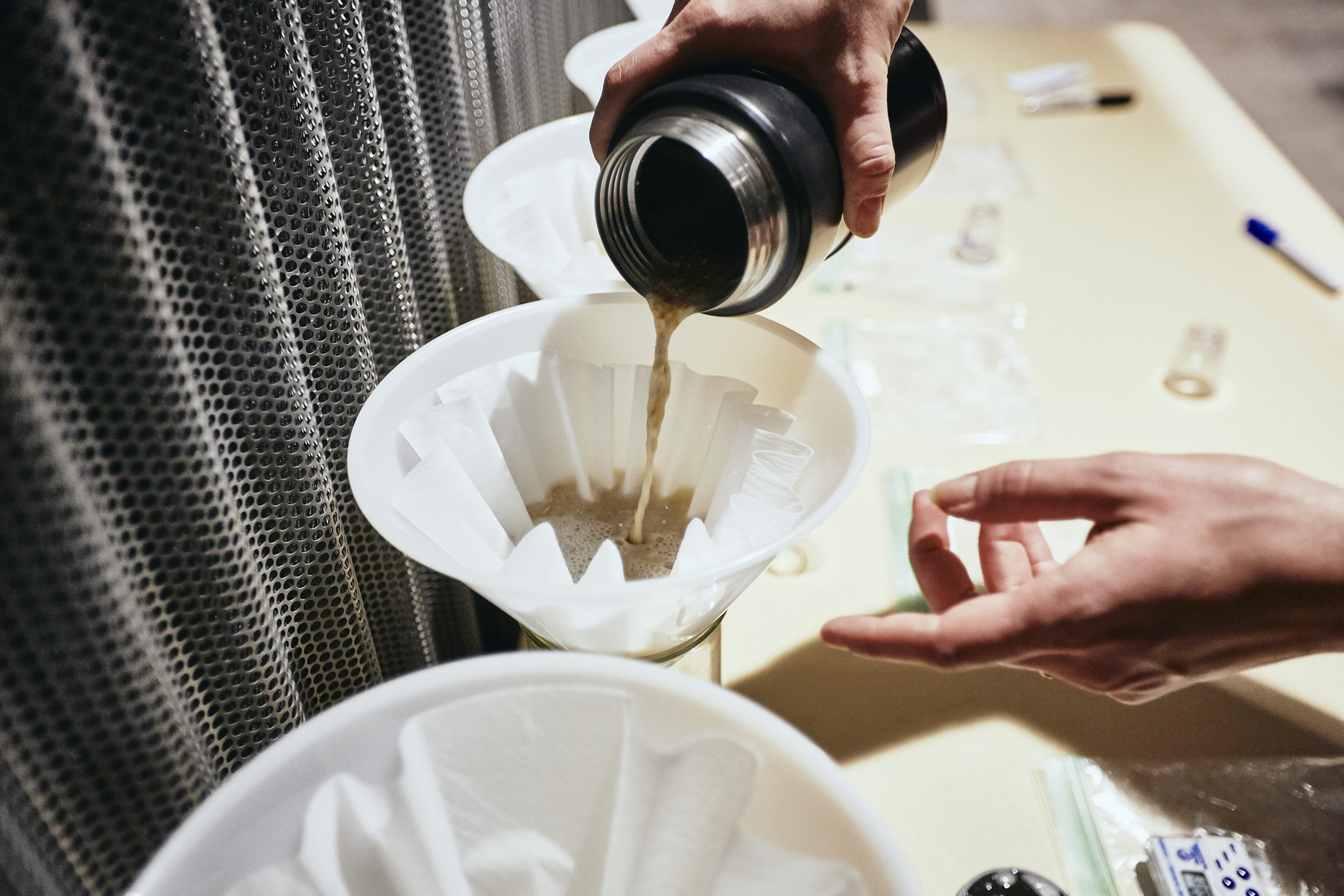By Harmonie Bettenhausen, Director of Hartwick College Center for Craft Food & Beverage
A couple of years ago, I sat in a friend’s garage as he waxed poetic about his homebrew. “It’s the best lager! Right? Better than any brewery.” I stared at him and thought, “what does this person mean? What do they mean by ‘best’? What is the context for this being ‘the best?” In a commercial setting, brewers would ideally have a team (even two or three) of dedicated, trained sensory people to give thumbs up or thumbs down on a beer but also to put some data to it. This data is used to measure against, track, and make changes against. It’s a representative of that snapshot in time of water, malt, hops, and yeast.
The ASBC Hot Steep Method has been talked about a lot lately. It can be used as part of your in/formal sensory program in the malthouse (and in the brewery). Observing your malt at this level can help you identify color, aroma, style, off-flavors, etc. But how do we connect these macro-level observations (sensory) to what’s going on at the micro-level (chemistry)? (Note: These resources are all available in Guild’s Quality & Safety Manual).
Recently, a paper was published in the Journal of the American Society of Brewing Chemists (JASBC) which addresses the malt hot steep extract, the chemical profile associated with 12 different commercial malts, and the variation we saw among those hot steeps. In “Mass Spectrometry Metabolomics of Hot Steep Malt Extracts and Association to Sensory Traits,” a study was designed to describe the chemistry of 12 commercial base malts. For this study, we sent to maltsters, a general plea for “your best malts with high extract/low color.” We set out to profile the sensory and chemistry of the subsequent hot steeps. Why? To bring attention to these relationships and to the trends that exist when you perform the hot steep. Trends should be more than anecdotal. The more we can analyze and report on trends, the more robust and useful this tool can be for everyone.
The 12 malts were found to have distinct chemical differences (the same compounds were present in every malt but in different abundances) which contributed to the nuanced flavor profiles of each malt hot steep. We were able to characterize, through the use of metabolomics, over 1,000 volatile (esters, aldehydes, alcohols) and non-volatile (lipids, saccharides) compounds in the hot steeps and two major trends. In Figures 1 and 2, we utilized some pretty useful multivariate (involving the simultaneous observation and analysis of more than one outcome variable) statistical methods to allow us to visualize trends and relationships in our data. The grassy characteristic (which included sensory attributes such as grass, green tea, hay) was associated with a high lipid and lipid ester profile (Figure 1).

The cereal characteristic was associated with many more Maillard Reaction Products (MRP, those compounds which are responsible for the nutty, toasty, roasted, caramel attributes, Figure 2).

What does this mean? These research findings support the value of sensory assessments of malt hot steeps when assessing the quality of malt, defect elimination, and potential for flavor development for craft malts. The measurements and procedures used in this research study have value in guiding decisions regarding malt selection but were not directly predictive of another. For example, grassy attributes in a hot steep are more likely indicative of fewer MRPs, and not predictive of grassy flavor in a beer.
The results of the study did support that there are sensory differences in flavor profiles of malt hot steeps, assessed through rigorous testing by a trained panel. If you are using this tool consistently, and are keeping up on training, this is not news to you.

In Figure 3, we highlight two of the pale malts, two different barley varieties, two different maltsters, but completely different profiles. It bears repeating that it is important to recognize your own trends in your own malthouse by asking yourself:
- Is there a “wrong” profile and a “right” profile for my malt?
- Is my malt consistently bready or reminiscent of green tea? What does that mean to me?
- What is going on in my process?
- How is my malt being stored and how long is it being aged?
- How does it relate to the data I get from my malt testing lab?
Being able to determine a “true to type” malt for your malthouse means that your malt is indicative and consistent with what you have created or purchased for a particular style from a particular barley variety. If it is not your malt? Well, this is a good time to harp on how important recordkeeping and data-tracking are (shameless plug for using MaltVis).
Subsequent papers recently published in JASBC and the Journal of Food Science, respectively, (Comprehensive Analysis of Different Contemporary Barley Genotypes Enhances and Expands the Scope of Barley Contributions to Beer Flavor, Continued Exploration of Barley Genotype Contribution to Base Malt and Beer Flavor Through the Evaluation of Lines Sharing Maris Otter® Parentage, and Strategic malting barley improvement for craft brewers through consumer sensory evaluation of malt and beer) do tackle further questions about a potential relationship from hot steeps to beer – and it currently is not a strong relationship, as pointed out by these authors. So, what to make of this tool if it cannot magically predict beer flavor (yet)? The hot steep method is a simple tool to add to your toolbox of macro-level measurements you can make at your malthouse. It is rapid, cost-effective, can be performed with small amounts of malt, and is useful not only for looking at consistency in color but in off-flavor development (and identifying the favorable flavors that are associated with your malt).



You must be logged in to post a comment.